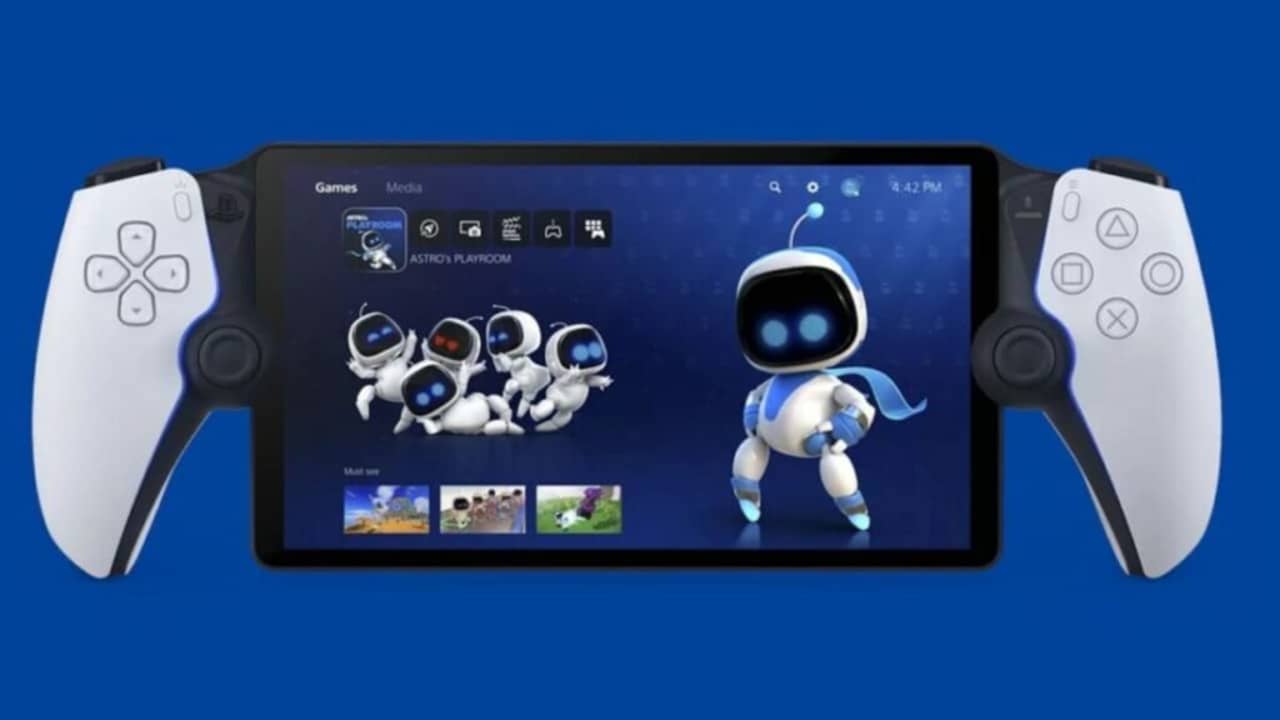When it was announced a few months ago, many of us didn’t quite see the utility of a gadget that was only a PS5 player, without the possibility of operating autonomously. The PS Portal simply acted as a mirror of your console… as long as you had a good internet connection.
After requesting it from Sony upon its release, they sent it to us a few days ago with a single mission: to test and provide our opinion on the device. Now, after a week of using it daily, there’s a lot to discuss.
The PlayStation Portal is a much more complex device than it may seem at first, and delivering a quality analysis will take us a while. So, get comfortable, dear readers.
A device that lives up to the Sony brand
Let’s start at the beginning: how well is the PS Portal constructed? Sony’s player is, first and foremost, a gadget. And as such, we must analyze it. That means discussing its build quality and the tactile experience it offers.
Here, without any hesitation, we can say that Sony has been leading the technology sector for more than three decades for a reason. From the moment we took the PS Portal out of the box, we could appreciate the care and quality put into the device.
Visually, the PlayStation Portal resembles a DualSense controller split in half with a tablet bridging both parts. This is evident in photos and when you hold it in your hands.
However, the quality of the materials and components is superb. The plastic is of high quality, textured for a good grip, the tablet is really thin and well finished, and no matter how much you handle it, it doesn’t make any creaking noises.
And it’s quite lightweight, weighing in at 529 grams, which feels quite minimal in the hands. Especially considering the 8-inch screen size (larger than the Nintendo Switch) and the 4,370 mAh battery.
The ports, namely the charging port and the headphone jack, are located on the back in a way that may seem unconventional, but once you use them, you discover why they’re placed there (awkward for plugging in, convenient for use while gaming).
We can’t think of a device that better translates the feeling and experience of playing on the couch and brings it into the realm of portability like this PlayStation Portal. It’s literally playing your PS5 wherever you want. At least in terms of sensation because now comes the reality that this device only functions when connected to the internet.
A gaming experience that has never reached the expected level
The issue with the PS Portal is that on its own, it’s useless. It’s merely a mirror (as we say in slang), meaning it reflects what’s happening on your PS5. By itself, it’s worthless, it doesn’t even function as a cloud console.
The concept was actually invented back in 2013 with the tablet-controller (as we called it then) of the Wii U. And the hardest part is that it worked better. Locally, yes, but it worked really well, without lag or resolution drops.
The experience with the PlayStation Portal varies for each user, a first for a Sony product. That’s why the reviews in the press have been so mixed in recent days. While the general sentiment is that this release is hard to justify.
The player costs €219.99 in Spain, the same price as a Nintendo Switch Lite + a gift game. And of course, one is a real console with its own catalog and thousands of games in its potential library to play wherever you want. The other is a player that requires internet to play your PS5 games online.
In our experience, with WiFi 6 at home, the PS5 connected via a wired connection to the router, and few walls in between, the PS Portal managed to provide gameplay with no lag but suffered from constant resolution drops. Very rarely could we enjoy games at 1080p resolution.
Games like Alan Wake 2, which are very dark, became quite uncomfortable to play because low-resolution dark areas translated into large, bothersome black pixels. Only when we were stationary could we get the PS Portal to function at its maximum resolution.
It’s possible that having an open kitchen in the living room causes interference due to household appliances, which could somewhat favor the player. However, when we moved away from the living room, just two meters from the router with only one wall in between, the situation remained the same.
I also tested the console at my in-laws’ house, with WiFi 6 and in an office space without clear interference. In this scenario, the PS Portal provided slightly more consistent performance, with a more stable resolution.
However, in no case did it perform as a product priced at over 200 euros should, especially when its sole job is to mirror the signal coming from my PS5.

Conclusions about a very difficult-to-fit device
With an experience like this, as you can see, it’s difficult to recommend the product. Especially considering the price of the hardware.
If we’ve barely had moments where the player showcased its full potential, despite being at home with a stable WiFi connection and having 1 Gbps speed, it’s clear that the PS Portal doesn’t perform well in public places. In other words, forget about playing on the subway, bus, or airport.
The PS Portal seems designed for exclusive home use, greatly limiting its utility. However, it’s also true that in certain households, the TV is always occupied, meaning a PS Portal could be the savior for those thousands of players who can’t enjoy playing their PS5 daily.


